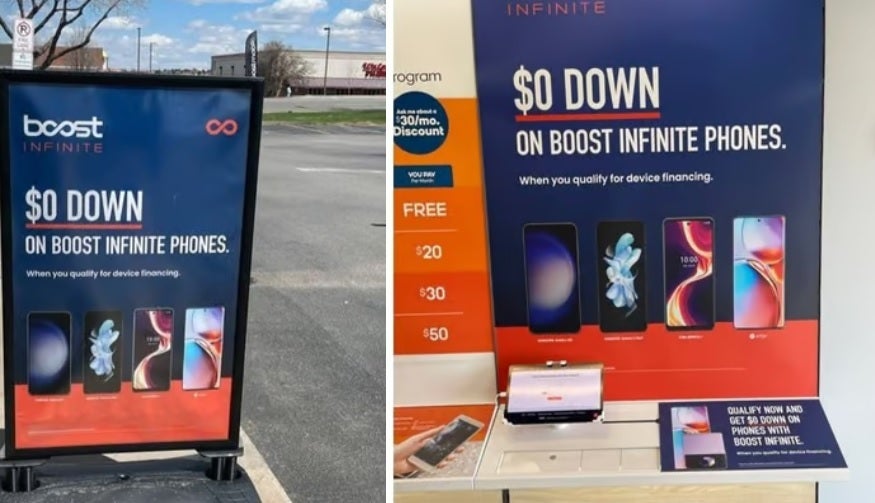One prepaid Boost Mobile store promotes upcoming postpaid Boost Infinite brand
Dish wants its Boost Infinite service to work with the Apple iPhone
Dish Chairman Charles Ergen has said that the iPhone has a huge market share in the U.S. and that it would be difficult to run a profitable postpaid business in the States without offering the iPhone. Ergen, Dish Network’s chairman, has admitted that Dish hasn’t been as aggressive in marketing Boost since it knows that the economics of the business will pick up when it can offer Boost customers its own 5G network and postpaid plans.

Boost Mobile in Aurora, Colorado is promoting Boost Infinite. Image Credit Wave7 Research
Moore added that for branding “you really need to separate the postpaid brand from the prepaid brand.” He pointed out that AT&T has Cricket for prepaid subscribers, T-Mobile has Metro by T-Mobile for prepaid customers, and Verizon has several brands thanks to its purchase of TracFone. Sprint had kept its prepaid Boost Mobile service separate from its Sprint postpaid offerings. “Some degrees of separation there, I think, are important,” Moore said.
Dish adds two more retail partners for Boost Mobile
Comparing Dish Network’s naming plan with retail stores, Moore said that if Kmart wanted to take on high-end retailer Nordstrom, “you could call it Kmart Elite and try to compete with Nordstrom, but that would be a horrible idea. If it were me, I’d go with Dish Wireless as my postpaid brand and not Boost Infinite, but [they] didn’t ask me.”
In the U.S., only T-Mobile is currently using a completed stand-alone 5G network. Such networks are cheaper for carriers to run but most importantly, they deliver better experiences and faster data speeds for consumers.
For all the latest Technology News Click Here
For the latest news and updates, follow us on Google News.

